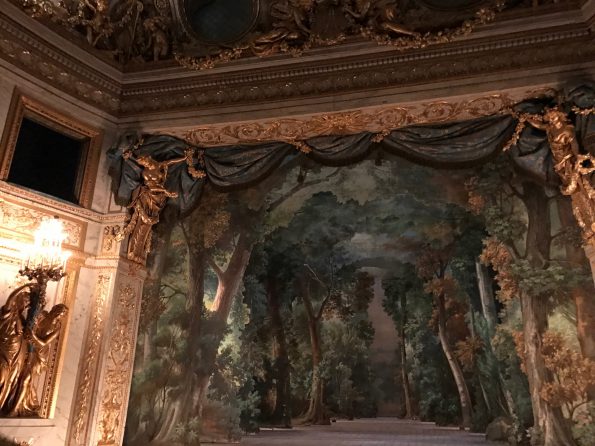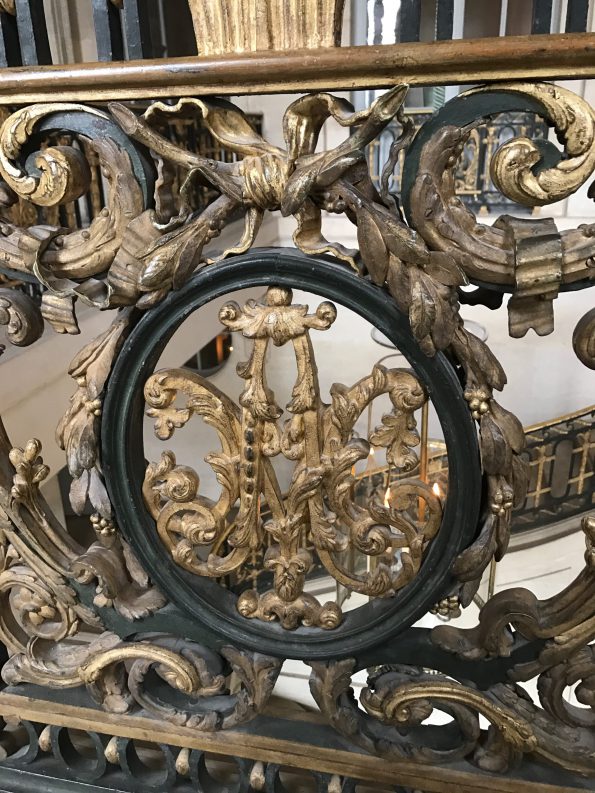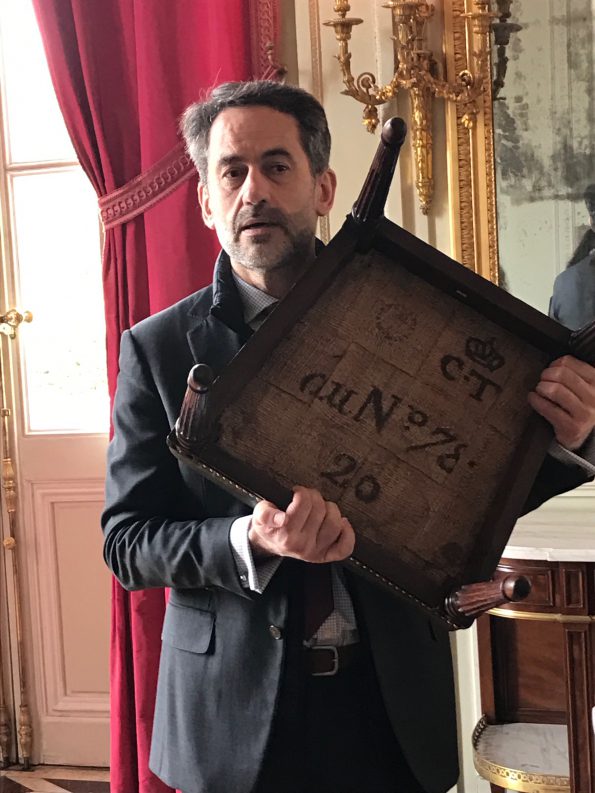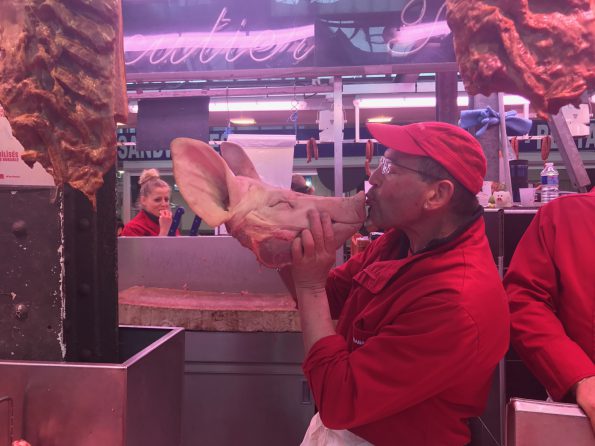By Katherine Trout

Pont des Arts Bridge in Paris.
PARIS, FRANCE – I don’t know what it was that drew me to Pont des Arts. But that’s the magic of being a flâneur – a wanderer – of the streets of Paris.
There are plenty of bridges in Paris – 37 to be exact – but Pont des Arts has a distinct reputation for romance. The bridge gained notoriety several years ago when it became a destination for lovers to lock padlocks onto its sides, symbolic of their binding love. The locks have now been removed and the grates have been replaced by glass, but the bridge retains its romantic glory.
I came across Pont des Arts while I was walking along the Quai François Mitterrand on a sunny Friday afternoon. I was leisurely making my way to the Grand Palais to visit the newly-opened Auguste Rodin exhibition. I passed the central square of the Palais du Louvre on my right. When I looked the other way, I came face-to-face with Pont des Arts.
A flâneur is not bound by time, but is free to explore. She can choose to wander through a hidden market or take a detour through a charming alleyway. She can meander across a bridge with no pressing need waiting on the other side.
I strolled between a peddler selling nuts and a photographer shooting several models dressed in Hunter rain boots and brightly colored raincoats. Tourists embraced their oddity and waved selfie-sticks in the air, trying to get their perfect picture above the Seine.
The soft hum of a violin drew me further down the bridge.
An old man stood by the edge of the bridge, slightly hunched over the maple-colored wooden violin, gently held in the crook of his arm. The shade of a tan fedora covered his face, and a pair of square, dark sunglasses hid his eyes. He was clad in a simple long-sleeved black shirt with an unzipped gray vest layered on top. On the outside, the man was by no means extraordinary. But the music that sang from his instrument was.
I sat down on a wooden bench a little way from the violinist. I silently urged him to not notice my curiosity – I wanted to watch him in his natural element. His hand gripped the bow sturdily. When he brought the bow close to the violin, he let it only lightly kiss the strings. The violinist kept his head down, intently gazing at his instrument. It was if the world to him was solely composed of his violin and himself.
A young couple holding hands approached. The girl had dark, long hair that spilled over her shoulders and onto her gray wool coat. She was a head shorter than the boy she was with, though without her black pumps, the height difference would have been at least a head and a half. The boy had tousled brown hair – though he was casually dressed in a pair of dark skinny jeans and white sneakers, he had an air of subtle confidence about him. His head was always bended down, softly speaking to the girl.
Questions flooded my mind. Who were they? How had they stumbled across Pont des Arts? I made up stories in my head. Perhaps they had met as college students at Sciences Po. Or maybe in a quaint Parisian café.
The couple approached the violinist and slowed their pace. The music captured them. Pedestrians walked by, peddlers hawked their goods, and car horns blared in the background. The boy wrapped his arms around the girl’s waist and hugged her close to him. The girl put her hands around his neck and brought her lips in close for a kiss.
For a moment, to the fixed observer, the chaos of Paris halted.
Surrounded by the strokes of the violin bow, he stroked her face and took it into his hands. A gentle kiss at first, then a longer kiss of passion.

The couple kisses (left) as a violinist plays (right) on the Pont des Arts Bridge in Paris.
The violinist played for his love of the instrument. The boy kissed for his love of the girl.
The young man withdrew his arms and took up the girl’s hand again. They walked on and left the bridge.
With gathered courage and amassed curiosity, I approached the bench directly facing the violinist. I tossed a few euros into his open case and he glanced up in acknowledgement. I sat down, and rested my chin on my hands.
With an intent audience of one watching, the violinist played with more fervor and passion.
A couple of passersby sat down next to me. They stayed for a minute, then continued on.
The violinist finished the song.
Looking up to me, he tipped his hat, saying, “Merci beaucoup.”
But I needed to thank him. I replied, “No, merci beaucoup.”










